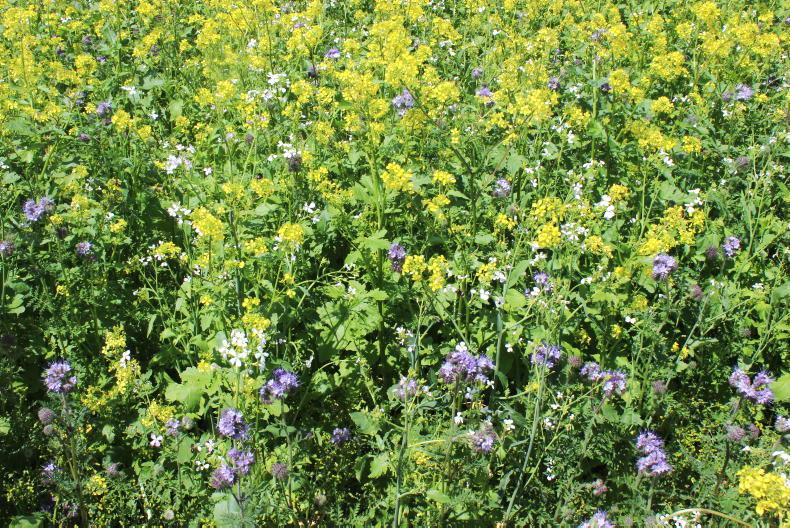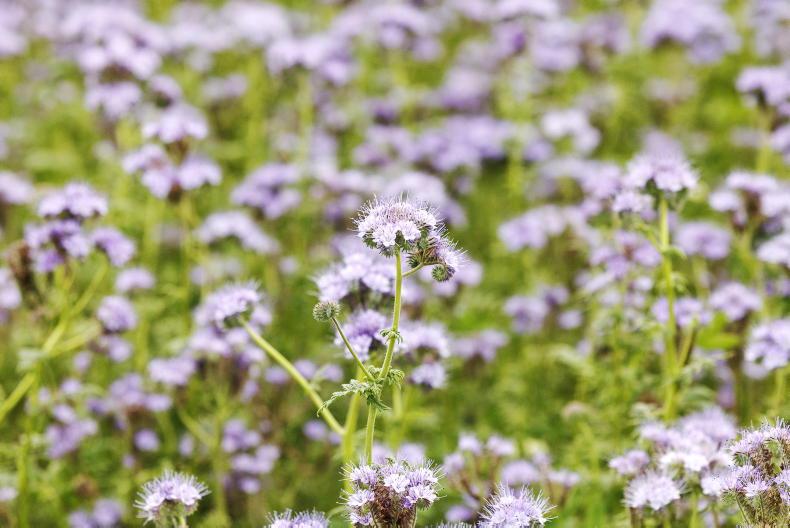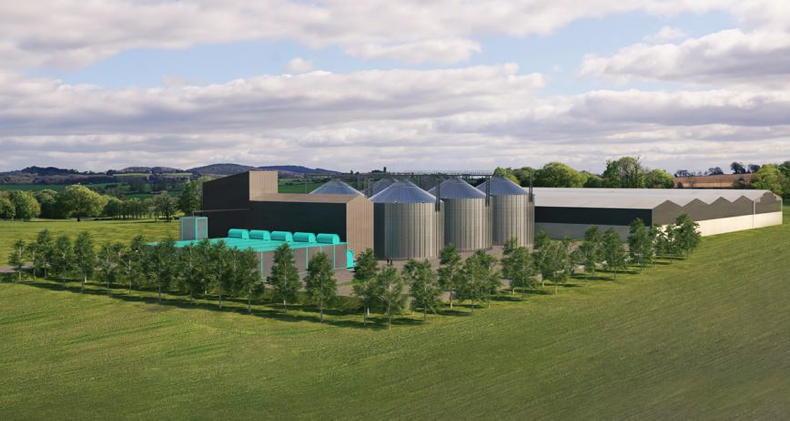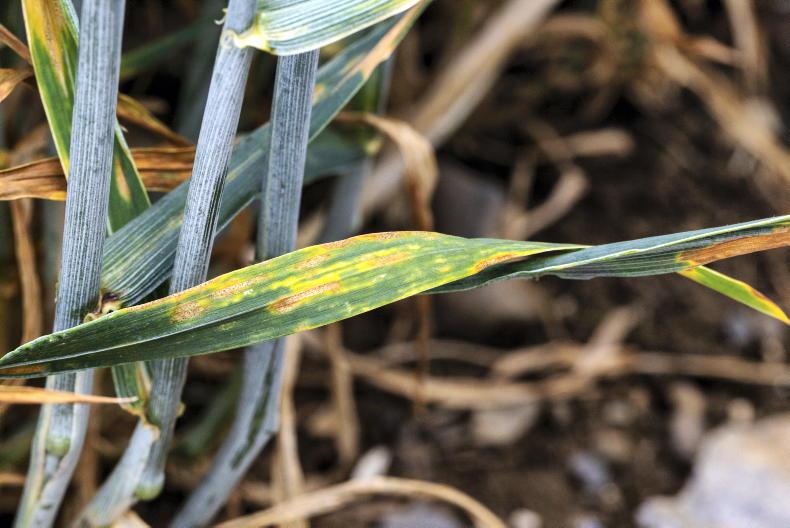Cover crops, catch crops, whatever you want to call them they can do a lot of good on farms.
These crops are planted after a cash crop to take up nutrients from the ground and prevent loss to the environment, as well as providing a cover to the soil to prevent erosion and help to improve soil health and compaction.
So, let’s go into the details of cover crops and why you might plant them on your farm. Approximately 40,000ha of cover crops are planted in the Republic of Ireland every year – 20,000ha have been planted under GLAS in recent years and about 20,000ha by farmers themselves.
Last year is expected to have been higher than this as some farmers planted a cover crop while carrying out stubble cultivations under the new nitrates rules.
Take-up nutrients
Catch crops should do exactly what they say on the tin – catch. Catch crops are planted after a cash crop to take up nutrients from the soil that are available and at risk of loss to the environment. This means that the nutrients are taken up and are safe in the plant and may then be incorporated back into the soil and used by the next crop.
Add organic matter back into soil
By growing a catch crop and incorporating it back into the soil you can add organic matter to the soil.
We cannot keep harvesting crops from land and not put anything back in. This is why slurry, farmyard manure and chopped straw are all applied to land.
In the same way, a cover crop can be grown on soil and then be incorporated back into the soil to break down and add to the organic matter content of the soil. This organic matter can then supply crops with nutrients and help to improve soil structure.
Carbon sequestration
When catch crops grow, they are like any plant. They take carbon in from the atmosphere and when the crop is incorporated into the soil some of this carbon can be stored in the soil.
Carbon and organic matter are similar. There is carbon in the organic matter content of the soil.
A catch crop producing 3t of dry matter per hectare can add 250kg of carbon/ha, according to Teagasc.
Feed animals
Crops can be grown to feed to animals. This means the catch crop will do three jobs.
It will feed animals, take up soil nutrients and return organic matter to the soil.
However, the animals will breakdown the cover crop quickly and add the organic matter back to the soil through manure.
It is important that light animals are used to graze catch crops and that the soil is protected. Animals should not graze cover crops when the land is too wet for grazing.

Roots of a catch crop on Norman and Michael Dunne's farm in Maynooth at the BASE Soil Dependence event this month. \ Claire Nash
Fencing needs to be carried out to keep animals from poaching land. A lieback area can also be useful to prevent poaching.
If a catch crop is planted under ACRES it cannot be grazed by animals until 1 January.
Establishing a catch crop provides a cover on the ground and this protects the soil from the elements.
It will keep heavy rain and wind away from the soil which can result in soil erosion. Having a living root will also add more structure to the soil and help to prevent soil loss in heavy rainfall events.
Help to improve soil structure
Planting a catch crop can add a lot to the soil’s structure. Adding organic matter to the soil will help with water holding capacity and will add life to the soil.
Bacteria, fungi, micro-organisms and worms will live in the soil and help it to function by creating air and space.
Different types of roots are also a big help to the soil and can help to fix some compaction problems.
A deep-rooted plant like forage rape or stubble turnips can help to break compaction in the soil. Small roots like on a crop of phacelia can help to bring a crumbly texture to the soil. Having different roots is important.
Catch crops add hugely to biodiversity on the farm.
They provide a habitat for animals and wildlife to shelter, as well as providing feed through the insects that increase in numbers and the biodiversity that is created.
The different crops also provide biodiversity in the soil and help to add to the microorganisms in the soil.
Cover crops, catch crops, whatever you want to call them they can do a lot of good on farms.
These crops are planted after a cash crop to take up nutrients from the ground and prevent loss to the environment, as well as providing a cover to the soil to prevent erosion and help to improve soil health and compaction.
So, let’s go into the details of cover crops and why you might plant them on your farm. Approximately 40,000ha of cover crops are planted in the Republic of Ireland every year – 20,000ha have been planted under GLAS in recent years and about 20,000ha by farmers themselves.
Last year is expected to have been higher than this as some farmers planted a cover crop while carrying out stubble cultivations under the new nitrates rules.
Take-up nutrients
Catch crops should do exactly what they say on the tin – catch. Catch crops are planted after a cash crop to take up nutrients from the soil that are available and at risk of loss to the environment. This means that the nutrients are taken up and are safe in the plant and may then be incorporated back into the soil and used by the next crop.
Add organic matter back into soil
By growing a catch crop and incorporating it back into the soil you can add organic matter to the soil.
We cannot keep harvesting crops from land and not put anything back in. This is why slurry, farmyard manure and chopped straw are all applied to land.
In the same way, a cover crop can be grown on soil and then be incorporated back into the soil to break down and add to the organic matter content of the soil. This organic matter can then supply crops with nutrients and help to improve soil structure.
Carbon sequestration
When catch crops grow, they are like any plant. They take carbon in from the atmosphere and when the crop is incorporated into the soil some of this carbon can be stored in the soil.
Carbon and organic matter are similar. There is carbon in the organic matter content of the soil.
A catch crop producing 3t of dry matter per hectare can add 250kg of carbon/ha, according to Teagasc.
Feed animals
Crops can be grown to feed to animals. This means the catch crop will do three jobs.
It will feed animals, take up soil nutrients and return organic matter to the soil.
However, the animals will breakdown the cover crop quickly and add the organic matter back to the soil through manure.
It is important that light animals are used to graze catch crops and that the soil is protected. Animals should not graze cover crops when the land is too wet for grazing.

Roots of a catch crop on Norman and Michael Dunne's farm in Maynooth at the BASE Soil Dependence event this month. \ Claire Nash
Fencing needs to be carried out to keep animals from poaching land. A lieback area can also be useful to prevent poaching.
If a catch crop is planted under ACRES it cannot be grazed by animals until 1 January.
Establishing a catch crop provides a cover on the ground and this protects the soil from the elements.
It will keep heavy rain and wind away from the soil which can result in soil erosion. Having a living root will also add more structure to the soil and help to prevent soil loss in heavy rainfall events.
Help to improve soil structure
Planting a catch crop can add a lot to the soil’s structure. Adding organic matter to the soil will help with water holding capacity and will add life to the soil.
Bacteria, fungi, micro-organisms and worms will live in the soil and help it to function by creating air and space.
Different types of roots are also a big help to the soil and can help to fix some compaction problems.
A deep-rooted plant like forage rape or stubble turnips can help to break compaction in the soil. Small roots like on a crop of phacelia can help to bring a crumbly texture to the soil. Having different roots is important.
Catch crops add hugely to biodiversity on the farm.
They provide a habitat for animals and wildlife to shelter, as well as providing feed through the insects that increase in numbers and the biodiversity that is created.
The different crops also provide biodiversity in the soil and help to add to the microorganisms in the soil.











SHARING OPTIONS